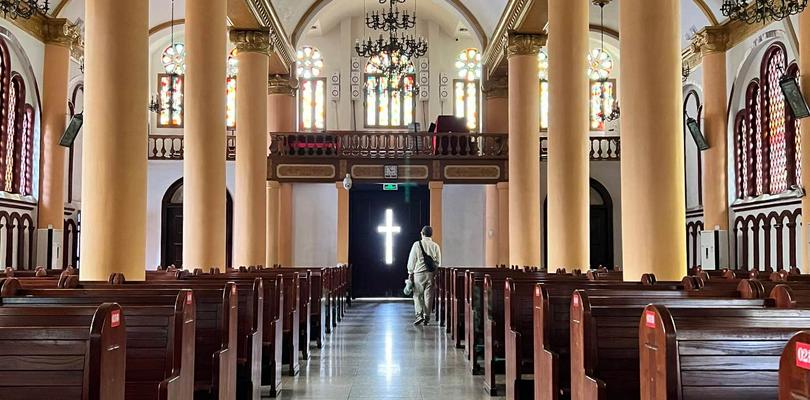A Brief Review of 2018-2023
In the broader public discourse, there is a prevalent tendency to focus on house churches or unregistered churches, which capture the limelight in media discussions. However, it is imperative to broaden our perspective and not disregard the significance of official churches or registered churches. According to official statistics, these churches command a substantial membership, exceeding 46 million individuals. Despite perhaps receiving less attention, these registered churches play a vital role in the religious landscape, contributing to the diversity and richness of the Christian community in China.
Understanding both the registered and unregistered aspects of the church in China provides a more comprehensive picture of the dynamic interplay within the Christian sphere, shedding light on the various challenges and opportunities that each sector encounters. The dichotomy of pressures on both sides highlights the intricate balance that Christian communities must navigate, seeking to preserve the essence of their faith while adapting to the complex socio-political landscape.
During 2018–2023, China underwent significant changes in its approach to religious affairs, marked by the launch of the Religious Affairs Administration Regulations in 2018. This regulatory framework set the tone for how the government intends to manage religious activities, a process that has taken time to translate into actionable plans. To maintain social stability and national security, entities other than those handling Christian affairs for Protestants (TSPM/CCC) or Catholics (CAC/BCCCC), like the National Security Administration, appear to have increased control over religious activities. This impact extends to both official and house churches in China.
As a result, registered churches seemed constrained, showing a hesitancy to undertake substantial actions beyond basic religious duties. This reluctance may stem from a) uncertainty about interpreting and implementing regulations, b) a desire to avoid drawing attention from other authorities, and c) a heightening of existing concerns caused by the impact of the COVID-19 pandemic and prolonged nationwide lockdowns, which added complexity to the situation. On the other hand, unregistered churches, operating outside official approval, have borne the brunt of intensified persecution. The pressures they face manifest in disruptions to gatherings, restrictions on religious activities, and the exile of foreign missionaries.
Anticipated Trends (2024–2028) in the Official Sinicization Agenda
In the next five years, the Sinicization agenda is anticipated to persist. Registered churches, despite their official recognition, will face intensified pressure to implement this agenda, aligning with government-sanctioned theological narratives. This approach has consistently drawn criticism for compromising doctrinal principles in exchange for state approval.
From years of observation, it is expected that the forthcoming official Sinicization agenda will encompass key themes, including a revitalised emphasis on theological education, theological Sinicization, and the establishment of a standardized model for church leadership and administration.
Theological education under this agenda entails highlighting patriotic sentiment and loyalty to the motherland while striving to elevate academic standards. Despite the agenda being announced over the years, the practical implementation of these goals is anticipated to gain momentum starting in 2023.
Secondly, the theme of theological Sinicization involves removing Western influence completely by stopping foreign lecturing, translation of Western theological books even if they are approved projects, and the endeavor that integrates Chinese traditional culture and values with Christian doctrine. We have noticed at least three approaches Chinese scholars have taken to theological Sinicization. Professor You Bin, based at Minzu University of China, promotes a new methodology called Chinese biblical theology. Simultaneously, there is a revival of Bishop Ding Guagxun's (K. H. Ting) theology at Nanjing Theological Seminary. Additionally, efforts are underway to use Scripture reasoning to link the Bible with the Chinese classics.
Furthermore, efforts will be made to regulate or create a single model for leadership, administration, and reporting structures within church leadership.
An intriguing phenomenon in the evolving tapestry of Christianity in China is the emergence of scriptural interpretation as a perceived safe and neutral theme. Amid regulatory challenges and shifting dynamics, the Bible has become a common ground where both registered and unregistered churches can converge without immediately invoking political scrutiny.
However, this seemingly unifying factor may also accentuate the existing division between the two groups. As registered churches seek to align their theological discourse with state-approved narratives, the interpretation and application of the Bible may undergo alterations to fit within prescribed boundaries. In contrast, unregistered churches, operating outside official endorsement, may continue interpreting the Scriptures in a manner that aligns more closely with their independent or traditional theological perspectives. In this context, the influence from so-called renewed Reformed theology and Western evangelical schools seems to be unavoidable. This dichotomy in the interpretation of the Bible further underscores the intricate dynamics at play and hints at the potential for divergence within the Christian community in both theology and practice.
Chaos in House Church Theological Education
The demand for theological training within the realm of Christianity in China has never been more pronounced. However, the surge in demand has led to a deluge of participants in this field, both qualified and unqualified, from China and overseas, who borrow the advantages of technologies, and enter without stringent restrictions. This influx, while reflective of the growing interest in theological education, has given rise to a paradoxical scenario. On one hand, there is a potential for the best and brightest minds to contribute to robust theological training programs. On the other hand, the lack of stringent entry criteria has paved the way for a proliferation of subpar and low-quality training initiatives. This conundrum poses a significant challenge, as the quality of theological training plays a pivotal role in shaping the future leadership and direction of the Christian community. Striking a balance between meeting the enormous demand and ensuring the integrity of theological education becomes paramount to foster a vibrant and informed Christian leadership in China.
Is There a Third Way?
In the midst of intricate challenges, believers and scholars are prompted to contemplate the existence of a transcendent "third way." As trends shape Christianity in China, a thoughtful exploration of biblical truths may uncover a third way in biblical interpretation—one that harmonizes faith, cultural context, and the regulatory environment, potentially fostering a resilient and adaptive Christian community. Can such an avenue navigate the complexities of the regulatory landscape while steadfastly upholding the core tenets of the faith? The ancient wisdom of Proverbs 3:6 urges believers to acknowledge divine guidance in all circumstances, fostering trust that a path aligned with God's principles can emerge even in challenging times. The journey ahead poses intriguing questions, challenging the community to seek answers that resonate with the evolving dynamics of faith and society.
Originally from the ChinaSource
CCD edited and reprinted with permission












